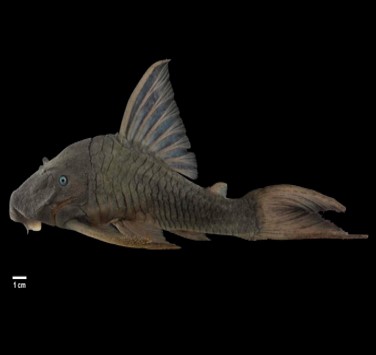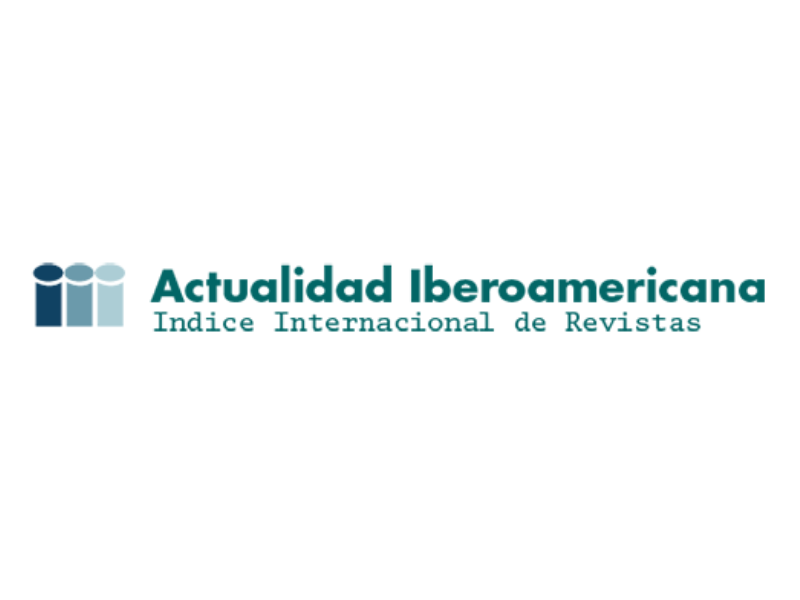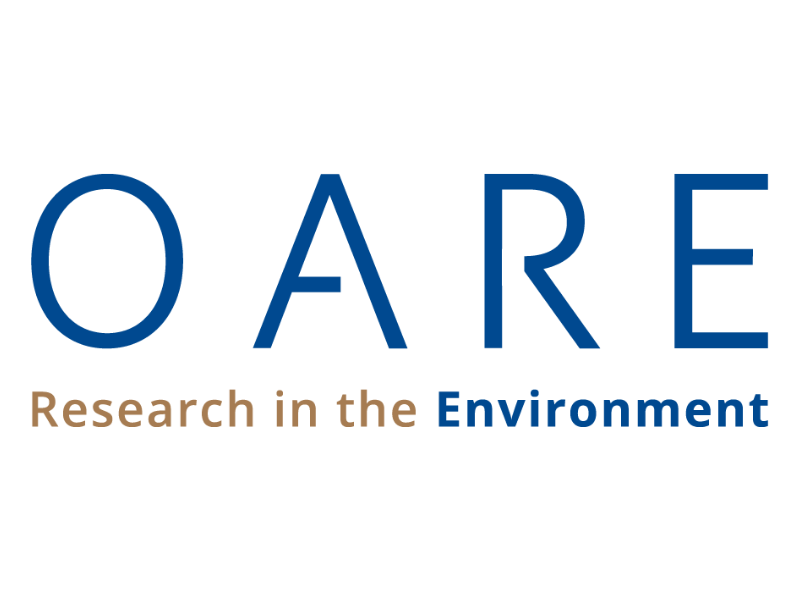Identificación microbiológica de algunas cepas nativas cultivables asociadas al tracto digestivo en Panaque cochliodon
Microbiological identification of some culturable native strains associated with the digestive tract in Panaque cochliodon


Esta obra está bajo una licencia internacional Creative Commons Atribución-NoComercial-CompartirIgual 4.0.
Mostrar biografía de los autores
Objetivo. Caracterizar por pruebas microbiológicas y bioquímicas las cepas nativas asociadas al tracto intestinal de la especie Panaque cochliodon. Materiales y métodos. Se utilizaron tres ejemplares adultos de la especie Panaque cochliodon capturados en el río Magdalena que fueron transportados y sacrificados bajo normas de bienestar animal. Se realizó disección del tracto intestinal obteniendo muestras para el aislamiento microbiológico, usando medios de cultivo selectivos, purificando los microrganismos, realizando pruebas bioquímicas metabólicas y pruebas API 20E (Biomeriux) para su identificación. Resultados. Se obtuvo información sobre la estructura poblacional microbiana, reportando el phylum Proteobacteria con las especies: Pantoea sp, Erwinia sp, Providencia stuarti, Providencia alcalifaciens, Serratia ficaria, Citrobacter koseri y el phylum Firmicutes con las especies: Bacillus sphaericus, Bacillus subtilis, Bacillus thurigiensis, Bacillus mycoides, Bacillus coagulans y Bacillus circulans. Conclusión. Se logró identificar microorganismos predominantes en Panaque cochliodon de gran relevancia para la acuicultura que pertenecen al phylum Proteobacteria y al phylum Firmicutes.
Visitas del artículo 233 | Visitas PDF
Descargas
- Mojica JI, Usma JS, Álva8rez-León R, Lasso CA. Libro rojo de peces dulceacuícolas de Colombia 2012. Bogotá, D.C. Colombia; 2012. http://hdl.handle.net/20.500.11761/34197
- McCauley M, German DP, Lujan NK, Jackson CR. Gut microbiomes of sympatric Amazonian wood-eating catfishes (Loricariidae) reflect host identity and little role in wood digestion. Ecol Evol. 2020; 10(14):7117-7128. https://doi.org/10.1002/ece3.6413
- McDonald RC, Watts JEM, Schreier HJ. Effect of Diet on the Enteric Microbiome of the Wood-Eating Catfish Panaque nigrolineatus. Front 2019; 10:2687. https://doi.org/10.3389/fmicb.2019.02687
- Vadstein O, Bergh Ø, Gatesoupe FJ, Galindo-Villegas J, Mulero V, Picchietti S, et al. Microbiology and immunology of fish larvae. Rev Aquac. 2013; 5(s1):S1-S25. https://doi.org/https://doi.org/10.1111/j.1753-5131.2012.01082.x
- Borges N, Keller-Costa T, Sanches-Fernandes GMM, Louvado A, Gomes NCM, Costa R. Bacteriome Structure, Function, and Probiotics in Fish Larviculture: The Good, the Bad, and the Gaps. Annu Rev Anim Biosci. 2021; 9:423-452. https://doi.org/10.1146/annurev-animal-062920-113114
- Anee IJ, Alam S, Begum RA, Shahjahan RM, Khandaker AM. The role of probiotics on animal health and nutrition. J Basic Appl Zool. 2021; 82(1):52. https://doi.org/10.1186/s41936-021-00250-x
- McDonald R, Zhang F, Watts JEM, Schreier HJ. Nitrogenase diversity and activity in the gastrointestinal tract of the wood-eating catfish Panaque nigrolineatus. ISME J. 2015; 9(12):2712-2724. https://doi.org/10.1038/ismej.12015.65
- Ludwig, W., Euzéby, J., Schumann P. Bergey’s Manual of Systematic Bacteriology.. 5 Ed. Vol. New York: Springer-Verlag New York; 2012. https://doi.org/10.1007/978-0-387-68233-4
- Puello-Caballero LP, Montoya-Campuzano OI, Castañeda-Monsalve VA, Moreno-Murillo LM. Caracterización de la microbiota presente en el intestino de Piaractus brachypomus (Cachamablanca). Rev Salud Anim,. 2018; 40(2):1-12. http://scielo.sld.cu/scielo.php?script=sci_abstract&pid=S0253-570X2018000200002&lng=es&nrm=iso
- Gutiérrez-Ramírez LA, David-Ruales CA, Montoya-Campuzano OI, González-Betancur EM. Efecto de la inclusión en la dieta de probióticos microencapsulados sobre algunos parámetros zootécnicos en alevinos de tilapia roja (Oreochromis sp.). Rev Salud Anim. 2016; 38(2):112-119. http://scielo.sld.cu/scielo.php?script=sci_arttext&pid=S0253-570X2016000200007
- Clements KD, Angert ER, Montgomery WL, Choat JH. Intestinal microbiota in fishes: what’s known and what’s not. Mol Ecol. 2014; 23(8):1891-1898. https://doi.org/https://doi.org/10.1111/mec.12699
- Wang AR, Ran C, Ringø E, Zhou ZG. Progress in fish gastrointestinal microbiota research. Rev Aquac. 2018; 10(3):626-640. https://doi.org/https://doi.org/10.1111/raq.12191
- Mouchet MA, Bouvier C, Bouvier T, Troussellier M, Escalas A, Mouillot D. Genetic difference but functional similarity among fish gut bacterial communities through molecular and biochemical fingerprints. FEMS Microbiol Ecol. 2012; 79(3):568-580. https://doi.org/10.1111/j.1574-6941.2011.01241.x
- Scott KP, Gratz SW, Sheridan PO, Flint HJ, Duncan SH. The influence of diet on the gut microbiota. Pharmacol Res. 2013; 69(1):52-60. https://doi.org/https://doi.org/10.1016/j.phrs.2012.10.020
- Talwar C, Nagar S, Lal R NR. Fish Gut Microbiome: Current Approaches and Future Perspectives. Indian J Microbiol. 2018; 58(4):397-414. https://doi.org/10.1007/s12088-018-0760
- Navarrete P, Espejo RT, Romero J. Molecular analysis of microbiota along the digestive tract of juvenile atlantic salmon (Salmo salar L.). Microb Ecol. 2009; 57(3):550-561. https://doi.org/10.1007/s00248-008-9448-x
- Llewellyn M.S., Boutin S., Hoseinifar S.H. DN. Teleost microbiomes: the state of the art in their characterization, manipulation and importance in aquaculture and fisheries. Front. 2014; 5:1-17. https://doi.org/10.3389/fmicb.2014.00207
- Türe M, Cebeci A ÖT. The first outbreak of citrobacteriosis caused by Citrobacter gillenii in reared Russian sturgeon (Acipenser gueldenstaedtii) in Turkiye. Vet Res Forum. 2022; 13(3):323-329. https://doi.org/10.30466/vrf.2021.137808.3076
- Michl SC, Ratten JM, Beyer M, Hasler M, LaRoche J, Schulz C. The malleable gut microbiome of juvenile rainbow trout (Oncorhynchus mykiss): Diet-dependent shifts of bacterial community structures. PLOS.ONE. 2017; 12(5):e0177735. https://doi.org/10.1371/journal.pone.0177735
- Liu H, Guo X, Gooneratne R, Lai R, Zeng C, Zhan F, et al. The gut microbiome and degradation enzyme activity of wild freshwater fishes influenced by their trophic levels. Sci Rep. 2016; 6(1):24340. https://doi.org/10.1038/srep24340
- Zhai Q, Yu L, Li T, Zhu J, Zhang C, Zhao J, Zhang H CW. Effect of dietary probiotic supplementation on intestinal microbiota and physiological conditions of Nile tilapia (Oreochromis niloticus) under waterborne cadmium exposure. Antonie Leeuwenhoek. 2017;110(4):501-513. https://doi.org/10.1007/s10482-016-0819-x
- Bledsoe JW, Peterson BC, Swanson KS, Small BC. Ontogenetic characterization of the intestinal microbiota of channel catfish through 16S rRNA gene sequencing reveals insights on temporal shifts and the influence of environmental microbes. PLoS ONE. 2016; 11(11):1-22. https://doi.org/10.1371/journal.pone.0166379
- Green GBH, Williams MB, Chehade SB, Flowers JT, Morrow CD, Lawrence AL, et al. Body Metrics and the Gut Microbiome in Response to Macronutrient Limitation in the Zebrafish Danio rerio. Curr Dev Nutr. 2023; 7(4):100065. https://doi.org/https://doi.org/10.1016/j.cdnut.2023.100065
- Lujan NK, German DP, Winemiller KO. Do wood-grazing fishes partition their niche?: morphological and isotopie evidence for trophic segregation in Neotropical Loricariidae. Funct Ecol. 2011; 25(6):1327-1338. http://www.jstor.org/stable/41319630
- Kim PS, Shin NR, Lee JB, Kim MS, Whon TW, Hyun DW, et al. Host habitat is the major determinant of the gut microbiome of fish. Microbiome. 2021; 9(1):166. https://doi.org/10.1186/s40168-021-01113-x
- Soltani M, Ghosh K, Hoseinifar SH, Kumar V, Lymbery AJ, Roy S, et al. Genus bacillus, promising probiotics in aquaculture: Aquatic animal origin, bio-active components, bioremediation and efficacy in fish and shellfish. Rev Fish Sci Aquac. 2019; 27(3):331-379. https://doi.org/10.1080/23308249.2019.1597010
- Ray AK, Ghosh K, Ringø E. Enzyme-producing bacteria isolated from fish gut. Aquac Nutr. 2012; 18(5):465-492. https://doi.org/https://doi.org/10.1111/j.1365-2095.2012.00943.x
- He S, Wu Z, Liu Y, Wu N, Tao Y, Xu L, et al. Effects of dietary 60 g kg−1 dried distiller’s grains in least-cost practical diets on production and gut allochthonous bacterial composition of cage-cultured fish: comparison among fish species with different natural food habits. Aquac Nutr 2013; 19(5):765-772. https://doi.org/https://doi.org/10.1111/anu.12023
- Ran C, Carrias A, Williams MA, Capps N, Dan BC, Newton JC, et al. Identification of Bacillus strains for biological control of catfish pathogens. PloS One. 2012; 7(9):e45793. https://doi.org/ttps://doi.org/10.1371
- Green TJ, Smullen R, Barnes AC. Dietary soybean protein concentrate-induced intestinal disorder in marine farmed Atlantic salmon, Salmo salar is associated with alterations in gut microbiota. Vet Microbiol. 2013; 166(1-2):286-292. https://doi.org/https://doi.org/10.1016/j.vetmic.2013.05.009
- Talukdar S, Ringø EGK. Extracellular tannase-producing bacteria detected in the digestive tracts of freshwater fi shes (Actinopterygii: Cyprinidae and Cichlidae). Acta Ichthyol Piscat. 2016; 46(3):201-210. https://doi.org/10.3750/AIP2016.46.3.04
- Peixoto SB, Cladera-Olivera F, Daroit DJ, Brandelli A. Cellulase-producing Bacillus strains isolated from the intestine of Amazon basin fish. Aquac Res. 2011; 42(6):887-891. https://doi.org/https://doi.org/10.1111/j.1365-2109.2010.02727.x
- Ray AK, Bairagi A, Sarkar Ghosh K, Sen SK. Optimization of fermentation conditions for cellulase production by Bacillus subtilis CY5 and Bacillus circulans TP3 isolated from fish gut. Acta Ichthyol Piscat. 2007; 37(1):47-53. https://doi.org/10.3750/AIP2007.37.1.07
- Askarian F, Zhou Z, Olsen RE, Sperstad S, Ringø E. Culturable autochthonous gut bacteria in Atlantic salmon (Salmo salar L.) fed diets with or without chitin. Characterization by 16S rRNA gene sequencing, ability to produce enzymes and in vitro growth inhibition of four fish pathogens. Aquaculture. 2012; 326-329:1-8. https://doi.org/10.1016/j.aquaculture.2011.10.016
- Deng Z, Jiang Y, Chen K, Gao F, Liu X. Petroleum Depletion Property and Microbial Community Shift After Bioremediation Using Bacillus halotolerans T-04 and Bacillus cereus 1-1. Front Microbiol. 2020; 11. https://doi.org/10.3389/fmicb.2020.00353
- Wróbel M, Śliwakowski W, Kowalczyk P, Kramkowski K, Dobrzyński J. Bioremediation of Heavy Metals by the Genus Bacillus. International Journal of Environmental Research and Public Health. 2023; 20(6):4964 https://doi.org/10.3390/ijerph20064964
- Hlordzi V, Kuebutornye FKA, Afriyie G, Abarike ED, Lu Y, Chi S, et al. The use of Bacillus species in maintenance of water quality in aquaculture: A review. Aquaculture Reports. 2020; 18:100503. https://doi.org/https://doi.org/10.1016/j.aqrep.2020.100503
- Kamilya D, Devi WM. Bacillus Probiotics and Bioremediation: An Aquaculture Perspective BT - Bacilli in Agrobiotechnology: Plant Stress Tolerance, Bioremediation, and Bioprospecting. En: Islam MT, Rahman M, Pandey P (eds.) Cham: Springer Int Publ; 2022. https://doi.org/10.1007/978-3-030-85465-2_15
- González-Díaz, Rosa Leonor, Mercado-Silva, Norman, Reynaga-Delgado,Martínez-Rivera. et al. LM. Bacterial microbiota from wild freshwater fish utilized for subsistence in western mexico. Rev Int Contam Ambient. 2020; 36(1):215-222. https://doi.org/https://doi.org/10.20937/rica.2020.36.53432























